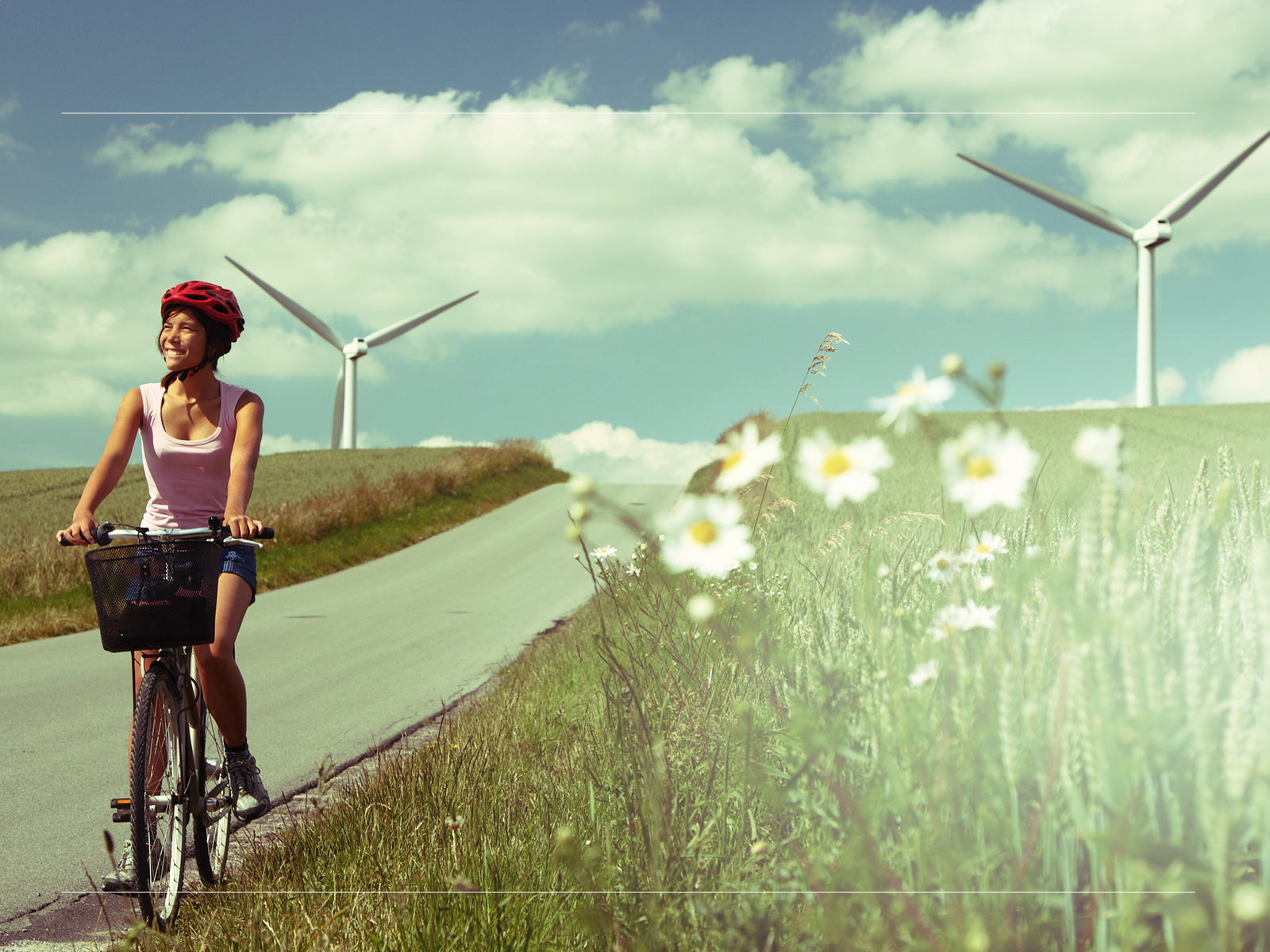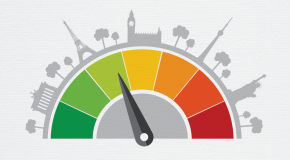In fossil fuels, for instance, natural gas production per rig has increased nearly 9-fold since 2010 in the northeastern US. As for low-carbon technologies, costs for onshore wind power have fallen 40% between 2008 and 2014, while those for solar PV (solar photovoltaic panels) technology were 59% lower in 2014 than they were in 2008. Financial innovations, such as solar leasing, have also helped spur the rollout of distributed solar PV in the US market.
Though encouraging, these gains due to innovation are slow moving. Of particular concern is public spending on clean energy research, development and deployment (RD&D), which is languishing. As a share of total public RD&D spend, public spending on energy RD&D has fallen considerably in rich countries – from 11% in the 1980s to 3-4% in 2015. And while the private sector has invested substantially in deployment, the level of research and development (R&D) within the energy sector is relatively low, particularly compared to other technologically advanced industries, such as information technology or pharmaceuticals.
In that context, and as part of an effort involving 20 countries, the US announced at the 2015 Paris Climate Change Conference its intention to double its public investment in clean energy R&D over the next five years. This would bring US investment levels in clean energy to nearly $10bn per year by 2020. Expanding basic research today is absolutely vital to developing tomorrow’s innovations.
Managing carbon
The need to meet environmental goals will require the US to focus on further decoupling carbon emissions from economic growth. Although energy-related CO2 emissions have grown more slowly than GDP since 2014 in the US (0.9% in 2015 vs. 2.4% in 2014) and have dropped in absolute terms by 15% since last year (due largely to the switch from coal to gas for power generation, to the deployment of renewables, and to improvements in energy efficiency) overall emissions from the sector are still higher than they were in 2012.[1] In particular, some two-thirds of America’s electricity is still generated with fossil fuels. Even with the Obama administration’s Clean Power Plan, this is only forecast to decline to about 53% by 2040.[2]
With such a high share of fossil fuels in the 2030 electricity mix, some still hope that carbon capture and storage (CCS) will play a significant role in future emissions reductions. Indeed, North America accounts for more than half of CO2 capture projects in development or operation globally, according to the International Energy Agency (IEA). And in 2014, Canada became the first country with an operational, large-scale coal power plant with full CCS capabilities. But while an important milestone, technical problems and cost overruns suggest the widespread use of CCS technology is hardly imminent.
In fact, under current trends, projected CCS annual storage capacity for 2025 from the entire world’s existing and planned CCS projects is only 63MtCO2e—a tiny fraction of today’s US emissions of more than 5,400MtCO2e. This discrepancy is critical as it is often assumed that CSS will play a major role in keeping the increase in global temperature to less than 2 degrees centigrade.
Financial and business model innovation
Meanwhile, financial innovation has helped deliver renewable energy projects that would not have been feasible before. These include green bonds—which direct or earmark funds for projects delivering both returns and clear emissions reductions— and Yieldcos, which offer steady dividends from operating renewable energy projects. While Yieldcos are currently struggling, they have succeeded in bringing new sources of capital into energy infrastructure. Going forward, more financial innovation is needed, from solar leasing to securitisation. Even crowdfunding has found its way into financing distributed energy generation.
Other innovations address business model shifts. In Texas, for example, some utilities have been offering residential customers free electricity from 9pm-6am, coupled with slightly higher daytime rates, as a way to shift electricity consumption patterns. The state, which accounts for 24% of the total installed wind capacity in the US[3], saw record wind-power generation in 2015; on some days, wind supplied over a third of the total load. These sorts of demand management activities can be further supported through the integration of smart meters or smart appliances. Connectivity, automation and data management can also make energy consumption more flexible.
Renewable energy
In recent years, the majority of new generation capacity addition has been in wind and solar, although the variability of their power generation leaves each plant producing fewer kilowatt hours for a given megawatt of installed capacity than fossil, hydro or nuclear resources. Indeed, the rapid growth of wind and solar can obscure the fact that together they accounted for a mere 5.3% of the US’s electricity production in 2015.[4]
It is clear that more is needed. According to the IEA, keeping temperature increases below 2 degrees will require the US to cut its share of electricity produced with fossil fuels from two-thirds in 2013 down to a third by 2040. But even as the cost of renewable energy falls, integrating intermittent energy sources into the electricity system, at a large scale, will require system adaptations and new investments.
“The early trials of high penetration of renewables are debunking the myth of [renewables] being bad for the grid because we’re seeing very concrete ways to tackle it—like smart inverters—and, ultimately, as storages prices come down, that will solve any problems,” says Nancy Pfund, managing partner at DBL Partners, a venture capital and impact investment firm that has been an early investor in companies such as Tesla and SolarCity.
Energy storage
The US, like the world more generally, is far from deploying energy storage at scale, however. For instance, to stay beneath a 2 degree temperature increase, the US would need to quadruple its storage capacity from 20GW in 2011 to 80GW in 2040. Pumped hydropower, which currently accounts for nearly all of US energy storage capacity, will not be able to fill this gap on its own due to geographical constraints that limit the number of places here large-scale dams can be built. This means that a range of new technologies will be needed.
There have been positive developments. In 2015, for instance, the US installed some 221MW of storage capacity—a 340% increase over 2014 levels, according to McKinsey & Company.[5] Tesla’s Giga-factory is also now open, and could produce up to 35GWh worth of storage capacity for electric vehicles as early as 2018. Building on these developments will require significant R&D investments and policy efforts. “Until the right policies are lined up so you can sell all the value of the storage, the market pull isn’t that big. Adequacy and grid balancing are not being monetised at the moment, for instance,” notes John Coequyt, director of Federal and International Climate Campaigns at the Sierra Club, an environmental advocacy group.
Some states have started to recognise this need for action. California, in particular, aims to procure 1.3GW of new energy storage capacity by 2020, with installations required no later than 2024. Most storage technologies, however, have a levelised cost of storage (a metric used for cost comparisons between different storage technologies) that is still higher than the approximately $175/MWh considered to be competitive with a gas-peaker plant.[6]
Innovation is thus central to decarbonisation efforts in the US and elsewhere. At the moment, however, US public investment in research, development and demonstration of battery technology remains limited.
Ramping up innovation efforts in clean energy will be key if the US is to meet its energy and environmental needs. For as David Turk, deputy assistant secretary for International Climate and Technology at the US Department of Energy notes, “If you don’t have robust innovation, if you don’t have new technologies, and if you don’t have cost reductions, countries are just not going to be able to be as ambitious as needed in their climate change efforts going forward".
[1] http://www.eia.gov/todayinenergy/detail.cfm?id=26152
[2] http://www.eia.gov/forecasts/aeo/cpp.cfm
[3] http://www.awea.org/resources/statefactsheets.aspx?itemnumber=890
[4] https://www.eia.gov/tools/faqs/faq.cfm?id=427&t=3
[5] http://www.mckinsey.com/Business-Functions/Sustainability-and-Resource-Productivity/Our-Insights/The-new-economics-of-energy-storage
[6] https://www.lazard.com/media/2391/lazards-levelized-cost-of-storage-analysis-10.pdf







